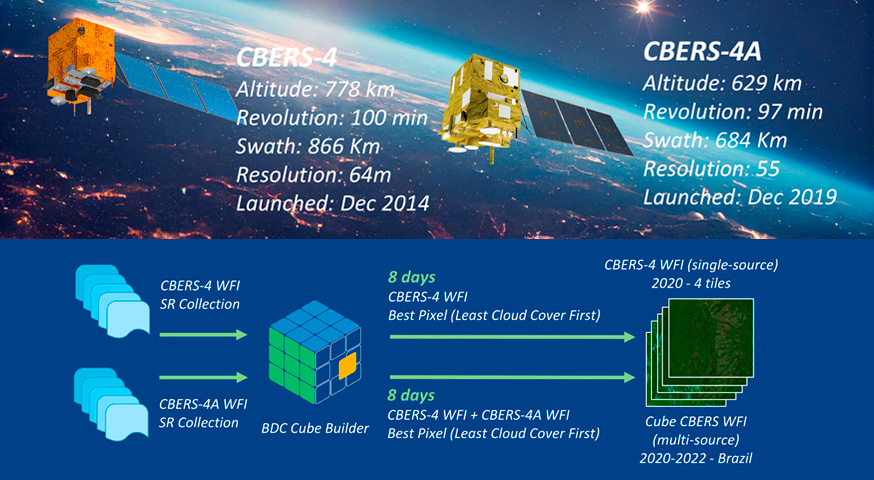A multi-source WFI datacube of CBERS-4 and CBERS-4A images: Improving visual interpretation
by Jeferson Arcanjo ¹ Rennan de Freitas Bezerra Marujo ¹ Ricardo Cartaxo ¹ Raphael Willian da Costa ¹ Gilberto Ribeiro de Queiroz ¹ Karine Ferreira ¹
¹ Instituto Nacional de Pesquisas Espaciais, Avenida dos Astronautas, 1758, Jardim da Granja, Sao Jose dos Campos, SP 12227-010, Brasil
Anais / Proceedings XX SBSR – Vol 20, 2023. – 156508: https://proceedings.science/sbsr-2023/trabalhos/a-multi-source-wfi-datacube-of-cbers-4-and-cbers-4a-images-improving-visual-inte?lang=pt-br
Publisher: SBSR | Published: April 5, 2023
Resumo
PRODES and DETER, Brazilian programs to monitor deforestation, rely on free optical images for visual interpretation, which can be obtained from the sensors on-board several satellites, such as Landsat-8, Landsat-9, Sentinel-2, CBERS-4, CBERS-4A and Amazonia-1. However, in optical remote sensing images, clouds and cloud shadows have a direct impact on the number of Earth’s surface observations. Combining images from different sources can help to overcome this information gap. Based on that, the Brazil Data Cube started to produce an experimental product that combines CBERS-4 and CBERS-4A images from the
WFI sensor on-board both satellites. The main idea of this product is to provide spatial and temporal mosaics with less clouds and cloud shadows than products containing images from a single satellite, improving visual interpretation. View Full-Text
Keywords: CBERS, Brazil Data Cube, Visual Interpretation, Optical Remote Sensing, Data Cube.
© This is an open access article distributed under the Creative Commons Attribution License which permits unrestricted use, distribution, and reproduction in any medium, provided the original work is properly cited




